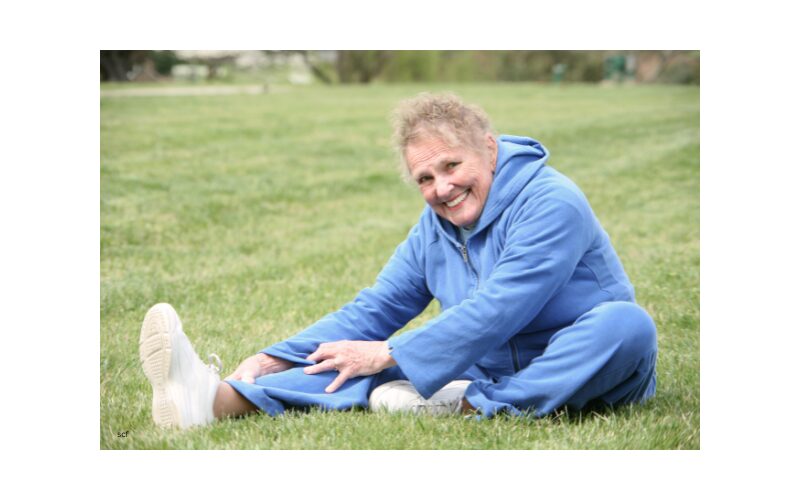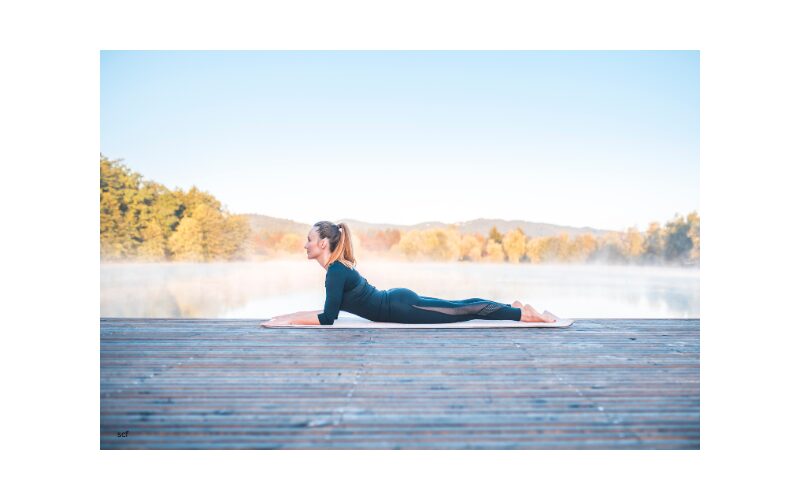Hey there, friend! Let’s chat about something that affects a lot of people as they get older: lower back pain. It’s no fun, but the good news is that there are plenty of exercises you can do to ease the pain, improve flexibility, and even strengthen those muscles to keep the pain from coming back. So, grab a comfy seat and let’s dive into these senior-friendly exercises that will have your back feeling better in no time.
1. Stretch It Out: The Power of Flexibility
Flexibility is like the secret ingredient to keeping your lower back happy. Stretching doesn’t just make you feel more limber; it also helps relax those tight muscles and improve your overall mobility.
Step 1: Cat-Cow Stretch
Start on all fours. Arch your back like a scaredy-cat (the Cat part), then slowly dip your belly down while lifting your head (the Cow part). This stretch works wonders for loosening up a stiff back.
Step 2: Child’s Pose
Kneel on the floor, sit back on your heels, and stretch your arms forward. It’s like giving your back a gentle hug. You’ll feel your lower back muscles release tension almost instantly.
Step 3: Hamstring Stretch
Sit on a chair or the floor with your legs extended. Slowly lean forward and reach toward your toes. Tight hamstrings can tug on your lower back, so keeping them stretched helps reduce strain.

Pro Tip: Move slowly and hold each stretch for 15–30 seconds. Don’t force anything! Adding a cushion or support under your knees can make these stretches even more comfortable.
Example: My friend Mary swears by these stretches. She starts her day with the Cat-Cow stretch and says it’s like hitting a “reset” button for her back.
2. Strengthen Your Core: Your Body’s Natural Back Support
Think of your core as your body’s foundation. A strong core takes the pressure off your back and helps improve your posture, reducing pain over time.
Step 1: Pelvic Tilts
Lie on your back with your knees bent. Flatten your lower back against the floor by tightening your stomach muscles. Hold for a few seconds, then release.
Step 2: Bird-Dog Exercise
Start on your hands and knees. Extend one arm forward and the opposite leg back. Keep your balance and hold for a moment before switching sides.
Step 3: Bridge Pose
Lie on your back with your knees bent and feet flat on the floor. Lift your hips toward the ceiling, squeezing your glutes. This strengthens your lower back and hips.
Pro Tip: Avoid traditional sit-ups or crunches, as they can strain your back. Focus on slow, controlled movements to engage your deep core muscles safely.
Example: John, a retired teacher, started with just a few pelvic tilts a day. Over time, his core got stronger, and now he’s back to gardening pain-free!
3. Low-Impact Aerobics: Gentle but Effective
Aerobic exercises don’t have to be high-intensity to be beneficial. Low-impact options get your heart pumping without putting extra stress on your back.
Step 1: Walking
A brisk walk around the neighborhood or even at the mall can do wonders. Walking strengthens your muscles, improves circulation, and reduces stiffness.
Step 2: Swimming
The water is your best friend when it comes to low-impact exercise. Swimming or water aerobics takes the pressure off your joints while giving you a great workout.

Step 3: Cycling
Using a stationary bike is another fantastic option. It’s easy on your back and helps build strength in your legs and core.
Pro Tip: Start small—10 to 15 minutes a day—and gradually increase your time as your endurance improves.
Example: My neighbor Sarah joined a water aerobics class at her local pool. She loves how the water supports her back while letting her stay active and social.
4. Gentle Strength Training: Build Resilience
Building strength doesn’t mean lifting heavy weights. Gentle resistance exercises can help you improve your lower back and overall body support.
Step 1: Wall Sits
Stand with your back against a wall. Slowly slide down into a sitting position (as if there’s an invisible chair). Hold for a few seconds, then stand back up.
Step 2: Seated Leg Raises
Sit in a chair with your back straight. Lift one leg, hold for a few seconds, then lower it. Repeat with the other leg.
Step 3: Resistance Band Rows
Grab a resistance band, anchor it to something sturdy, and pull the band toward you as if rowing a boat. This strengthens your upper back and improves posture.
Pro Tip: Always prioritize good form over heavier resistance to avoid injuries. Start with light weights or bands and gradually increase as you feel stronger.
Example: George, a retired firefighter, incorporates leg raises and wall sits into his morning routine. He says his back feels more supported when he’s out hiking.
5. Yoga and Mindful Movements: Relaxation Meets Strength
Yoga is an excellent way to combine gentle stretching, core strengthening, and mindfulness. It’s all about finding balance and being kind to your body.
Step 1: Cat-Cow Pose
(Yes, it’s a yoga move, too!) This stretch is so beneficial that it deserves another mention.
Step 2: Sphinx Pose
Lie on your stomach, prop yourself up on your forearms, and gently lift your chest. It’s a fantastic way to open up your lower back.

Step 3: Legs-Up-the-Wall Pose
Lie on your back and rest your legs vertically against a wall. This pose reduces swelling and relieves tension in your lower back.
Pro Tip: Join a senior-friendly yoga class or follow along with an online video tailored for beginners.
Example: Carol, a 70-year-old retired nurse, started practicing yoga twice a week. Not only has it helped her back, but she says it’s been a game-changer for her mental health too.
Conclusion: A Happier, Healthier Back is Within Reach
There you have it—five fantastic ways to manage lower back pain and improve your quality of life. Whether you’re stretching it out, strengthening your core, or enjoying a leisurely swim, every little bit helps.
The key is consistency. Even 10–15 minutes a day can make a world of difference. Listen to your body, move at your own pace, and don’t be afraid to modify exercises to suit your needs.
Lower back pain doesn’t have to hold you back from doing the things you love. With these exercises in your toolkit, you’re well on your way to feeling stronger, more flexible, and ready to tackle whatever life throws your way.
So, are you ready to give these a try? Let’s get moving—you’ve got this!


